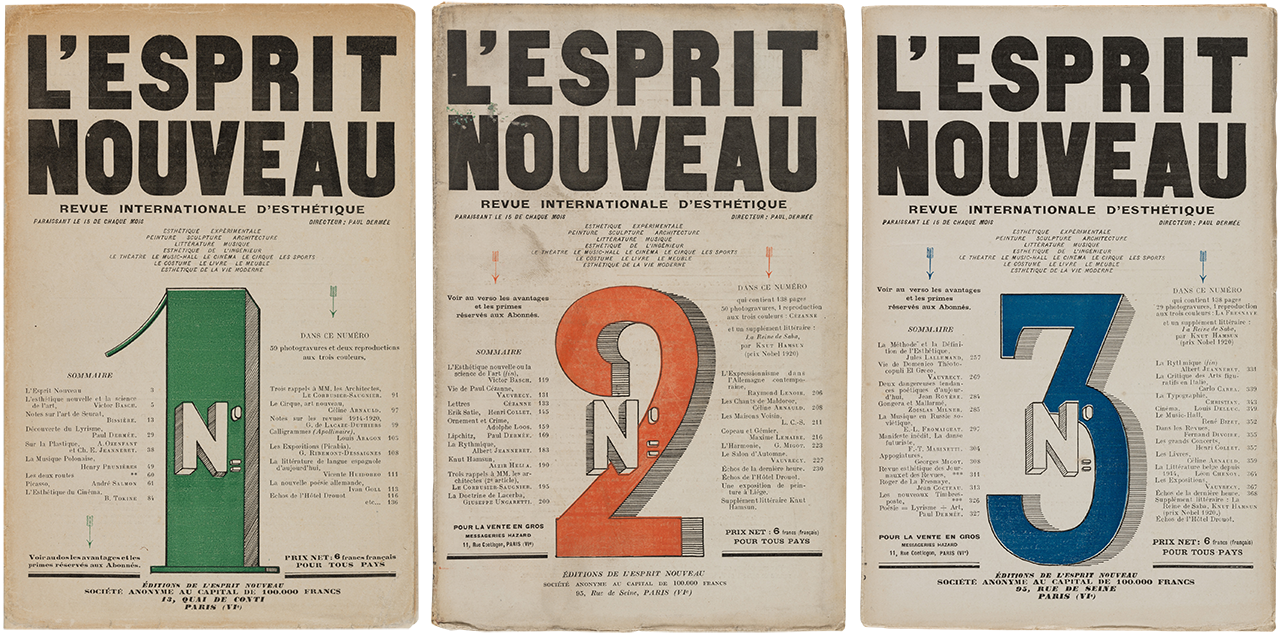Le Corbusier’s books and essays
Le Corbusier referred to himself as a writer in his identification documents. That is how much he valued the expression of literature.
Soon after he began his time in Paris in 1920, he published his magazines l'Esprit Nouveau (total 28 issues) with an artist Amédée Ozenfant and a poet Paul Dermée. They used multiple pen names to make it seem as there were more writers. “Le Corbusier” was one of the pen names he used for pieces introducing architecture and paintings. These essays were later consolidated into books such as Vers une architecture, Almanach d’architecture moderne, and L'Art décoratif d'aujourd'hui. These literatures successfully conveyed the architect’s ideals for the architecture of the new age.
After publishing Ville contemporaine de trois millions d’habitants, a city for 3,000,000 people, he wrote several books regarding city planning. In the latter half of 1930s until WWII, he also published proposals for the rebuilding of the ruined cities.
When he lost the competition for the Palais de la Société des Nations in 1927, due to some apprehensive reasons, he published Une Maison – Un Palais, which revealed the inner working of the competition and formed an attack on the old establishments and academies.
After WWII, he wrote about his modulor, along with works such as Unité d'Habitation in Marseilles, Chapelle Notre Dame du Haut in Ronchamp, Couvent Sainte-Marie de La Tourette, and Le poeme electronique.
Perhaps the most famous of all is Oeuvre Complete, a collection of his complete works. Le Corbusier himself chose the photographs and wrote the narratives for this eight-book series, while the first book is edited by the architect himself (the eighth book was published after his death). Not all volumes are treated the same way in this series, showing his uneven attentions and the emphasis he gave to his projects, which make it an important set of documents in its own ways.
Many of his books have covers designed by Le Corbusier himself. One can enjoy his graphic designs by gazing at them.

l'Esprit Nouveau
Research documents regarding Le Corbusier
Several literatures regarding Le Corbusier are published every year.
He was often featured in magazines in his lifetime, especially when completing new projects. Even 50 years after his death, we can see new information and papers published.
Le Corbusier was extremely skilled at editing his own works and self-productions. He has ignored all of his early works in Switzerland, and only presented works in his Paris years. Sometimes he would give more attention and coverage on unrealized projects, and frequently featured the rejected schemes for the realized ones. In his lifetime, he only showed himself in ways that he wanted to be identified. After this death, much documents surfaced in his atelier, revealing the true person behind the figure. This is the reason why new information can still be published today. Perhaps there are still unknown character about the man we call Le Corbusier.
